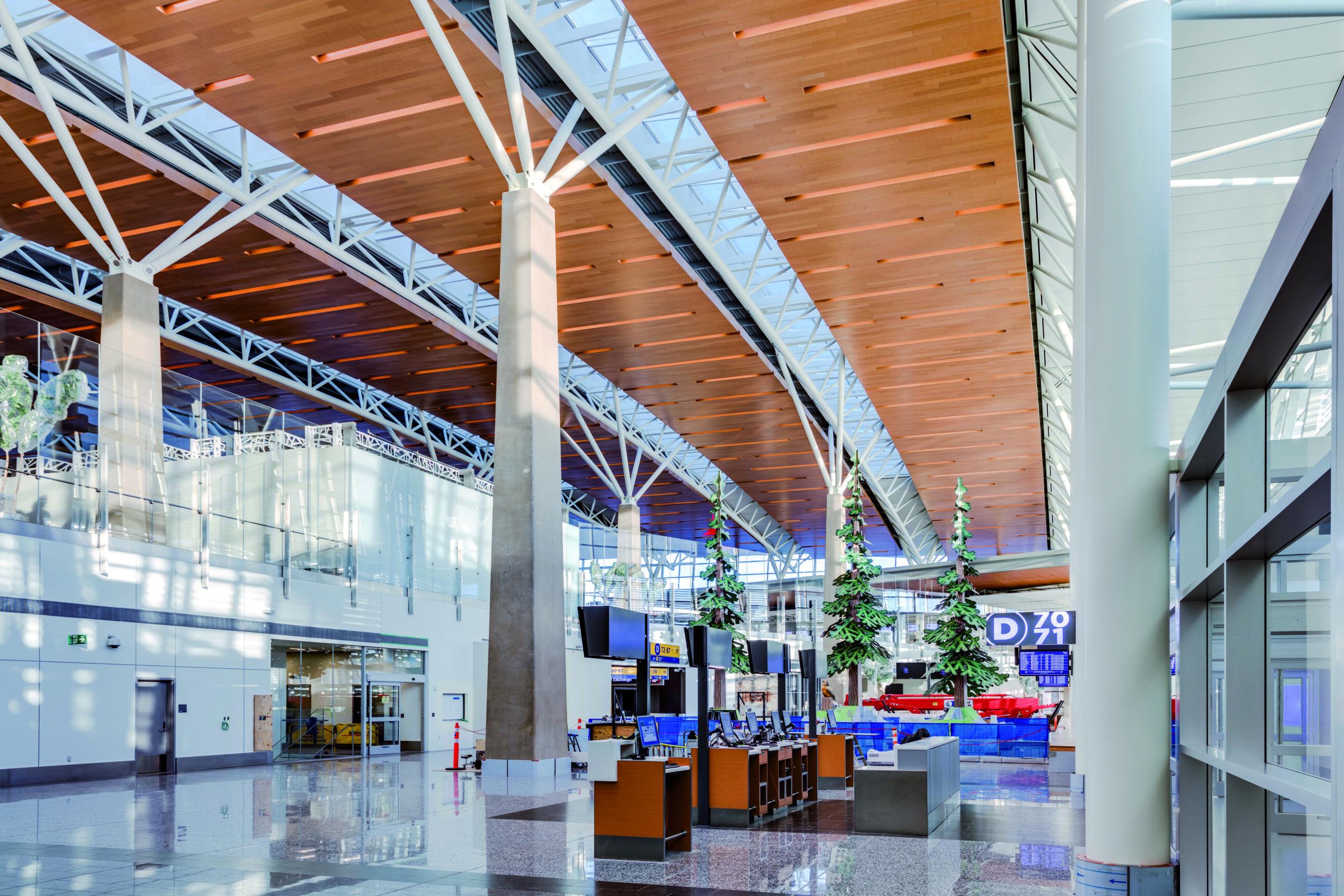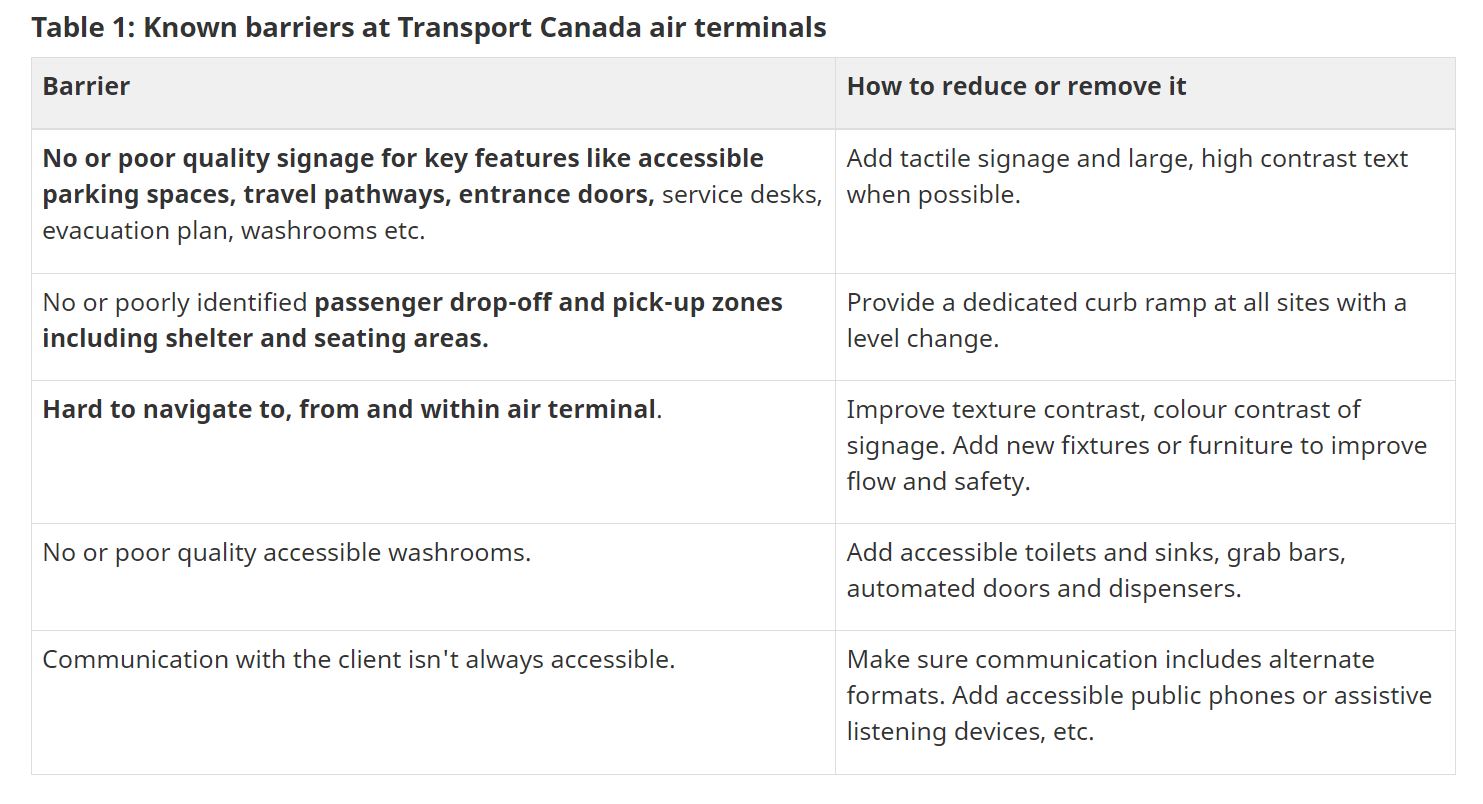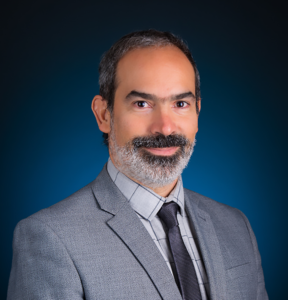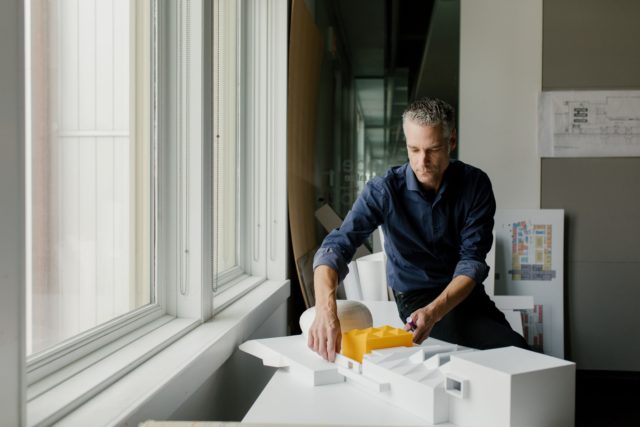What are the current accessibility standards?
Under the Accessible Canada Act (2019), government bodies are responsible for preparing and publishing accessibility plans, explaining how they will make services, travel, and the built environment more accessible to those with disabilities. With these plans and standards still under development, the level of service and assistance available to travellers with disabilities will vary by airline and airport, sometimes dramatically. It’s fair to say we are still in the early stages of the journey toward consistent accessibility standards for air travel. And it’s up to us as designers, airlines, airport authorities, academics, and beyond to push the conversation forward.
Transport Canada has an overarching goal of being barrier-free by 2040. At DIALOG, our goal is to design without barriers today. We’re committed to making accessibility and inclusivity guiding principles that inform every design choice we make.
How can design thinking improve air travel?
In the context of accessibility, design thinking begins by deeply understanding the needs, experiences, and challenges faced by individuals with both cognitive and physical disabilities. It involves actively listening to their stories and gaining insights into their daily lives to develop a profound sense of empathy. This empathetic understanding serves as the foundation for creating solutions that genuinely address their unique requirements.
The Inclusive Airports study will gather this qualitative information and develop an understanding of this cohort’s needs by following 24 participants as they navigate each step of their air travel journey, including:
- Airport entrence and exit (taking into account our Canadian climate)
- Check-in
- Customs and security processes
- Traffic and long distances to the gate
- Gender-neutral toilets
- Access to the aircraft
- The aircraft seat
- Immigration process
- Baggage claim
- Airport administrative offices (for those wishing to work at the airport)
These 24 participants have a variety of disabilities, including motor disabilities, visual disabilties, and invisible disabilities (autism spectrum, hearing impairments, chronic pain, and additional challenges). It will also include elderly participants with no specific disability. By following these individuals and conducting verbal and video interviews, the research team will gain a deep understanding of their lived experiences, the barriers they face during air travel, and opportunities for design improvements and solutions.





